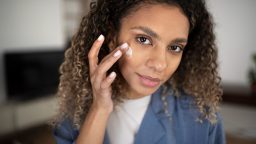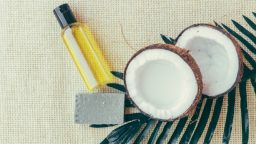Exfoliation is a vital step in any skincare routine, but when done incorrectly, it can lead to irritation, dryness, or even more serious skin issues. The key to a glowing, smooth complexion is exfoliating properly. Whether you’re using a physical scrub or a chemical exfoliant, it’s important to know the best techniques and products for your skin type to avoid damaging your skin. Here’s a guide to help you exfoliate your skin the right way, ensuring that your skin remains fresh, healthy, and radiant.
- Understand the Types of Exfoliation
There are two main types of exfoliation: physical and chemical. Each has its benefits, but it’s essential to choose the right one for your skin type and concerns.
- Physical Exfoliation: This method uses abrasive materials (such as scrubs, brushes, or sponges) to physically slough off dead skin cells. It’s perfect for those who want an immediate, visible effect. However, physical exfoliation can be too harsh for sensitive skin if overdone, leading to redness or irritation.
- Chemical Exfoliation: This type uses active ingredients like alpha-hydroxy acids (AHAs) and beta-hydroxy acids (BHAs) to dissolve dead skin cells. Chemical exfoliants tend to be gentler on the skin, making them a great option for sensitive or acne-prone skin. They also help to target specific skin concerns, such as uneven texture, acne, and hyperpigmentation.
- Determine Your Skin Type
Before you start exfoliating, it’s essential to identify your skin type. This will help you choose the right exfoliating method and product.
- Oily Skin: If you have oily or combination skin, you can generally handle more frequent physical exfoliation or stronger chemical exfoliants. Look for products with salicylic acid (BHA), which helps penetrate pores and reduce oil buildup.
- Dry Skin: Dry or sensitive skin types should avoid harsh physical exfoliants, as they can cause irritation or increase dryness. Opt for gentle chemical exfoliants, like lactic acid (AHA), which helps hydrate the skin while exfoliating.
- Acne-Prone Skin: Chemical exfoliants, particularly those with salicylic acid (BHA), are ideal for acne-prone skin, as they can penetrate deeper into the pores and help clear up breakouts. Avoid abrasive scrubs, as they can exacerbate inflammation.
- Sensitive Skin: If you have sensitive skin, it’s best to stick to gentle chemical exfoliants, such as mild AHAs, or use a soft cloth for physical exfoliation. Avoid any products with harsh beads or granules that could cause microtears in the skin.
- Exfoliate at the Right Time
Knowing when to exfoliate is crucial for achieving healthy, glowing skin. Over-exfoliating or doing it at the wrong time can lead to skin damage.
- Frequency: For most skin types, exfoliating 1-3 times a week is sufficient. Over-exfoliating can strip your skin’s natural oils, leading to dryness, irritation, or even breakouts. If you have sensitive skin, start with once a week and gradually increase if necessary.
- When to Exfoliate: The best time to exfoliate is in the evening, as your skin has a chance to repair overnight. Exfoliating in the morning can leave your skin more sensitive to sun exposure, which can lead to irritation or pigmentation. Always follow up with sunscreen if you exfoliate in the morning.
- Prepare Your Skin Before Exfoliating
Properly preparing your skin can help ensure that your exfoliating process is effective and gentle. Before exfoliating, make sure your skin is clean and free from makeup or dirt.
- Cleanse First: Start by washing your face with a gentle cleanser to remove dirt, oil, and makeup. This ensures that the exfoliant can work directly on your skin without any barriers. If you’re using a chemical exfoliant, make sure your skin is dry before applying it, as wet skin can dilute the acids and reduce their effectiveness.
- Steam Your Skin (Optional): If you’re using a physical exfoliant, consider steaming your face for a few minutes before exfoliating. The steam helps to open up pores and softens dead skin cells, making the exfoliation process more effective.
- Apply the Exfoliant Gently
Whether you’re using a physical or chemical exfoliant, apply the product gently to avoid irritation.
- Physical Exfoliation: If you’re using a scrub, avoid applying too much pressure. Gently massage the exfoliant in small, circular motions using your fingertips. Focus on areas with dry skin or rough patches, such as the nose or chin, but don’t overdo it. Avoid scrubbing too hard, as this can cause microtears in the skin, leading to irritation.
- Chemical Exfoliation: When using chemical exfoliants, apply a thin layer to your skin and leave it on for the recommended amount of time (usually 5 to 10 minutes). Don’t leave it on longer than recommended, as this can cause irritation. You can apply the exfoliant with your fingers or a cotton pad, but be sure to avoid the eye area.
- Follow with Hydration
Exfoliating removes dead skin cells, but it can also strip your skin of moisture, so it’s important to hydrate afterward. Follow up with a good moisturiser to replenish your skin’s moisture barrier and lock in hydration.
- Moisturiser: Choose a moisturiser that suits your skin type. If you have dry skin, opt for a thicker, richer formula. For oily or acne-prone skin, go for a lightweight, non-comedogenic moisturiser that won’t clog your pores.
- Serum: If you want to boost your skincare routine after exfoliating, consider applying a hydrating or repairing serum. Look for serums with hyaluronic acid, which helps attract moisture, or niacinamide, which helps calm and repair the skin.
- Don’t Forget Sunscreen
After exfoliating, your skin is more vulnerable to the sun’s harmful UV rays, so it’s crucial to wear sunscreen. Exfoliation can increase the risk of sunburn and hyperpigmentation, so make sure to apply a broad-spectrum SPF of at least 30 every day, even if you’re staying indoors.
Conclusion
Exfoliating is an essential step for maintaining clear, glowing skin, but it’s important to do it properly to avoid irritation or damage. By understanding your skin type, choosing the right exfoliant, and applying it gently, you can enjoy all the benefits of smooth, radiant skin without the negative side effects. Remember to always follow up with hydration and sun protection to keep your skin looking its best.





